Philodendron plowmanii is a charming unpublished plant native to Colombia and Peru. It has lovely heart-shaped leaves with a silvery-grey mottling and colorful petiole with undulating lateral wings or sheath.
What does P. plowmanii look like (leaves, stems, petiole, etc.)? What are its care needs (light, humidity, temperature, watering, feeding, soil, etc.)? Where do I find this lovely plant on sale, and what are its prices?
Discover more on Philodendron plowmanii, including care, appearance, and where to buy, starting with Etsy.com (best place). We will also look at Philodendron mamei vs. plowmanii and vs. pastazanum, etc. There are even the variegated, citrus, and silver plants you need to know.
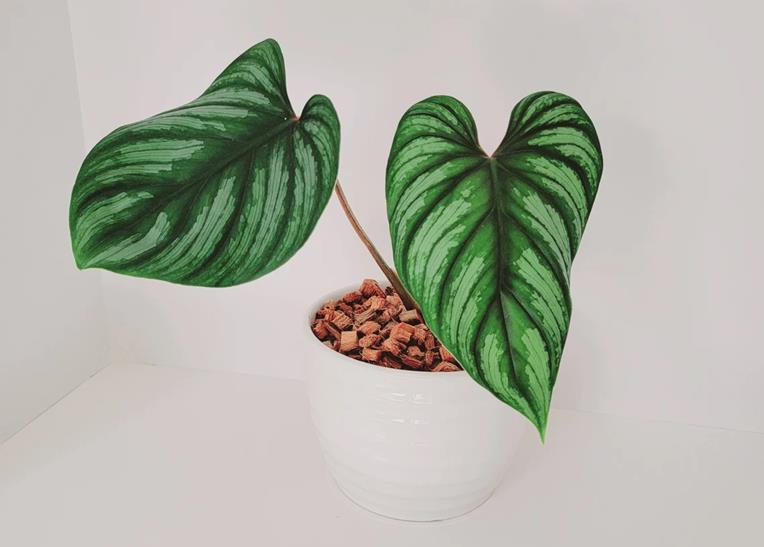
Contents
- Quick overview
- Description and appearance
- 1. Growing habits
- 2. Size and growth rate
- 3. Leaves
- 4. Philodendron plowmanii stem
- 5. Flowers
- Philodendron Plowmanii variegated
- Philodendron plowmanii citrus
- Philodendron Plowmanii Silver
- Philodendron pastazanum vs. plowmanii
- Philodendron plowmanii vs. mamei
- Philodendron plowmanii x tenue
- Philodendron plowmanii care
- 1. USDA hardiness zone
- 2. Humidity
- 3. Temperature
- 4. Light needs
- 5. Soil mix
- 6. Watering
- 7. Fertilizer
- 8. Pruning
- 9. Repotting
- 10. Staking or moss pole
- Propagation
- Problems
- 1. Root rot
- 2. Pests
- 3. Diseases
- 4. More problems
- Where to buy Philodendron plowmanii
- Frequently asked questions (FAQs)
Quick overview
- Scientific name: Philodendron plowmanii (unpublished)
- Family: Araceae (aroid or arum family)
- Native habitat: Peru and Colombia
- Toxicity: All plant parts are toxic to cats, dogs, and humans. Why? Because they have insoluble calcium oxalate crystals. When chewed, patients will suffer from severe oral irritation and burning sensation. Lips, the tongue, and the mouth may turn red and swell. More symptoms to expect include reduced appetite, swallowing difficulties, and pets may paw their mouth. Keep it out of reach of children and pets.
- Care level: Easy or low maintenance
Dr. Thomas Croat named this ground creeping aroid after Timothy Charles Plowman (1944-1989), an ethnobotanist who did extensive work on the Erythroxylum genus.
This plant makes an excellent ground cover in milder areas or a houseplant to people in the temperate.
Description and appearance
Let’s try to describe this lovely plant. But before that, we must warn you that this plant shows a lot of variations.
1. Growing habits
Philodendron plowmanii is a strict terrestrial creeping evergreen plant. But it may, in rare cases, grows as a hemiepiphyte, i.e., it has a phase on the ground and another one as an epiphyte (on trees).
It is native to Ecuador to central Peru, where it occurs at 975 to 4,875 feet (300 to 1500m) above sea level. You will find it growing as an understory plant in forest reserves.
Lastly, plowmanii looks different in various life stages (morphs), and shows many variabilities, i.e., specimens vary from one another.
2. Size and growth rate
Philodendron plowmanii is a fast-growing terrestrial creeper that may, on rare occasions, climb on trees. When climbing, they can reach be over 13 feet (4m) high. But since they are mainly creepers, we don’t recommend training yours to climb.
3. Leaves
P. plowmanii leaves are variable, i.e., they may show some variation from one specimen to another. Usually, it has smaller, oval to heart-shaped green juvenile leave with a more evident silvery or graying mottling.
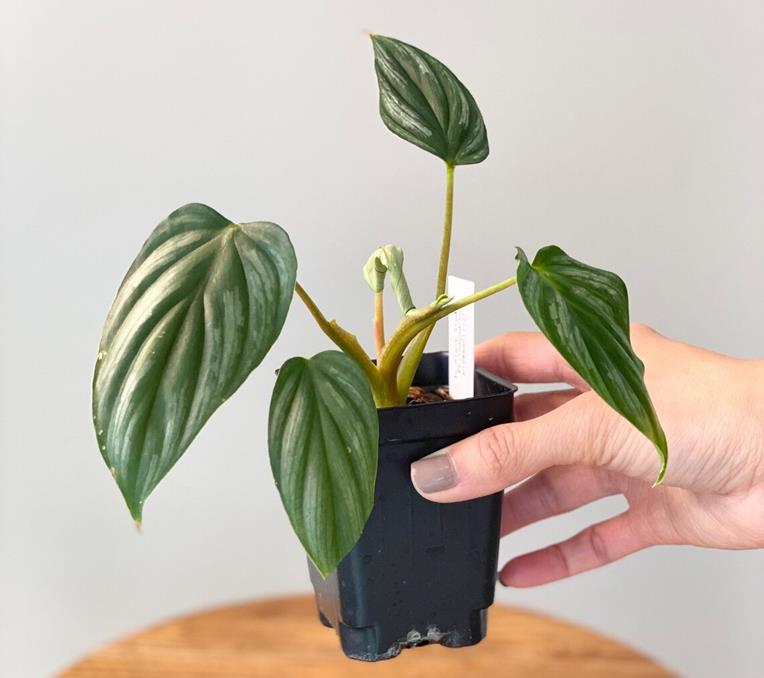
On the other hand, mature plants have larger (12 inches in length or more), heart-shaped medium green to dark green leaves with widely spaced, sunken primary veins that make the leaves appear quilted or pleated. Their underside is light yellow-green and green tone.
These leaves may have silvery to gray mottling that may fade as they age. But some specimens don’t have a silvery splash, while others may have paler yellow-green variegation. Those plants without the silvery or gray mottling somewhat resemble the Philodendron pastazanum.
If you touch the leaves, their texture is sub-leathery, and they appear slightly glossy on the upper surface. The lower side is paler and matte.
One of the most distinguishing features of Philodendron plowmanii is its colorful petiole with undulating winged margins towards the apex.
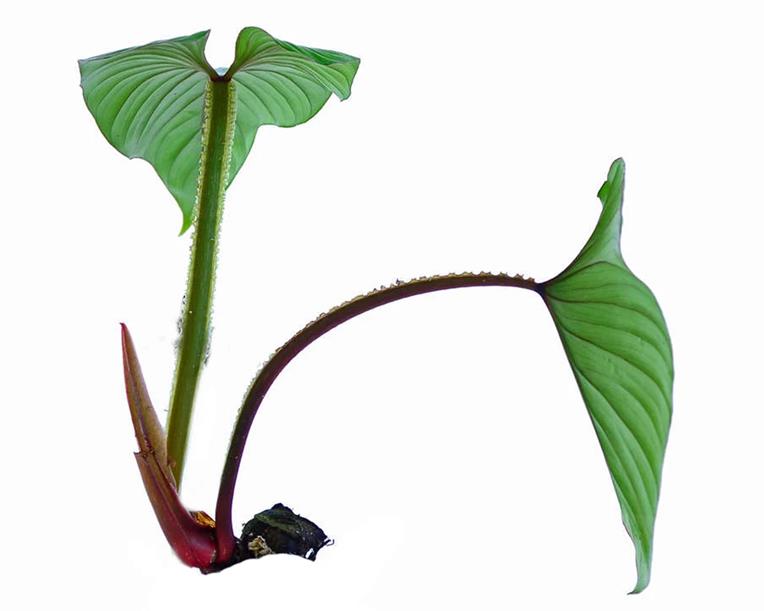
These medium green petiole with fine streaks (striae) are purplish violet or reddish-purple tinged towards the top side. Also, they are broadly convex on the upper surface and have lateral wings towards the apex with undulating or wavy wing margins. But some petiole may be D-shaped and lack wings. So, not all have petiolar wings.
4. Philodendron plowmanii stem
This Philodendron’s repent (crawling on the ground) stems grow roots at nodes. Internodes are short, and the stems have sharply double ribbed reddish cataphylls.
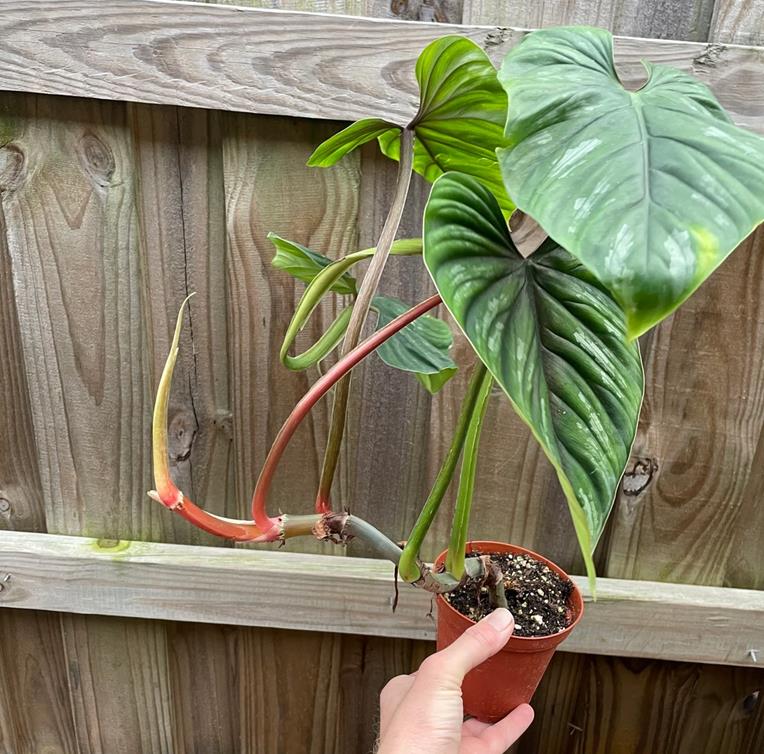
5. Flowers
Mature P. plowmanii will produce inflorescences, three per axil. Each has a spathe (bract) and spadix whose coloration may differ. Remember, this Philodendron shows variability.
The spadix bears tiny inflorescence flowers and has three sections, i.e., the lower female section inside a spathe tube (floral chamber), middle sterile male, and upper fertile male section.
On the other hand, the spathe tube is pinkish to purplish violet on the inside and dark violet-purple or pale-yellow green on the outside.
Lastly, the peduncle (flower stalk) is green with a red tinge and small white lines. But towards the apex, it may have a pinkish to deep burgundy tinge.
Philodendron Plowmanii variegated
If you want something more colorful, you can go for scarce mint variegated Philodendron Plowmanii. It costs about $1000 or more and is very rare. We cannot comment more about its stability at the moment.
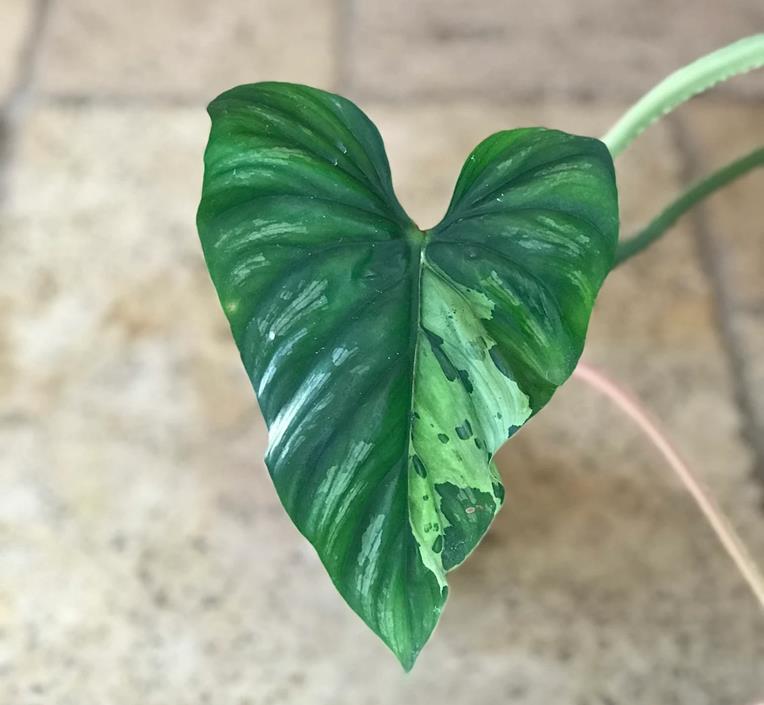
Philodendron plowmanii citrus
P. plowmanii ‘Citrus’ is a variation that has lovely light green leaves with silvery or whitish mottling or markings. Its stems and petiole are also light green.
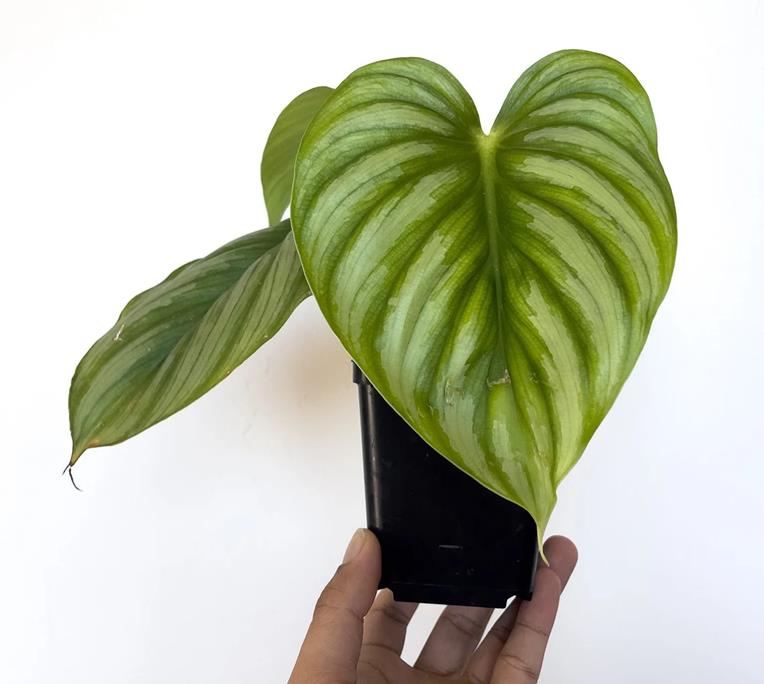
Philodendron Plowmanii Silver
Philodendron Plowmanii Silver has the usual heart-shaped dark green leaves but with more silvery markings or mottling on the leaves. We find this normal because this plant shows a lot of variabilities.
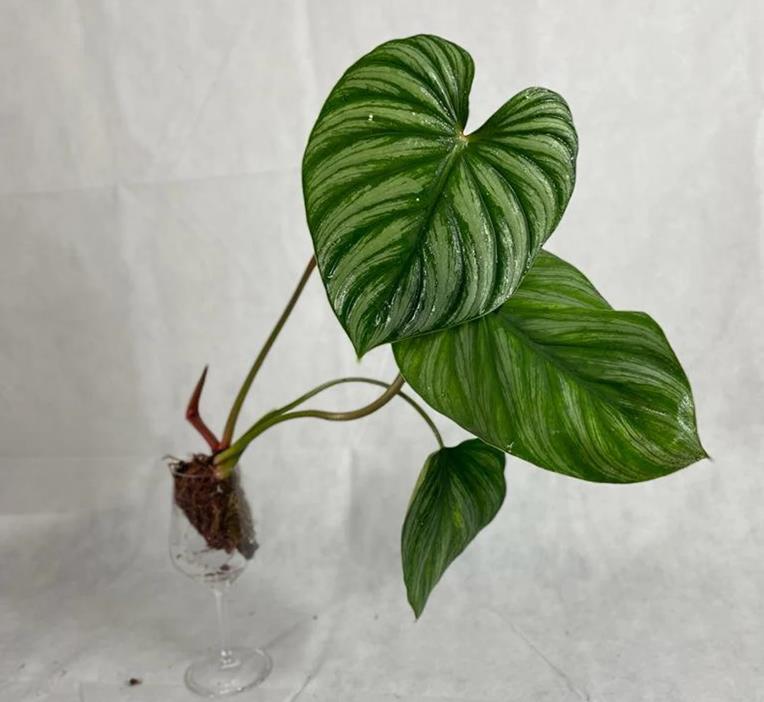
Philodendron pastazanum vs. plowmanii
It’s a fact that many people confuse Philodendron plowmanii and pastazanum. Both plants creep on the ground with their repent stems, mature plants have heart-shaped leaves, and are native to Ecuador and Peru.

The easiest way to tell the difference is by looking at silvery mottling that only occurs on plowmanii. Unfortunately, not all plowmanii specimens have this silvery splash.
Still, on leaves, plowmanii has dark green leaves with dark green mid-rib and primary veins. Pastazanum leaves, on the other hand, are also dark green (but a bit lighter), and their midrib is paler. Also, the primary ribs are paler towards the midrib.
The other sure way to distinguish between these two houseplants is by looking at their petiole. P. plowmanii has a colorful petiole that is medium green with a purplish violet or reddish-purple tinge towards the apex. Also, it has broad lateral wings towards the top with an undulating or wavy margin. But some specimens may not have wings.
On the other hand, Philodendron pastazanum has a medium green, sub-terete petiole with many small white streaks. Also, it is flatter on the apex and not colorful.
Philodendron plowmanii vs. mamei
Since they look alike, we guess a dig on Philodendron mamei vs. plowmanii may help you quickly identify these two plants.
Philodendron mamei is a terrestrial creeping plant native to Ecuador. These plants have green leaves with a silvery mottling, heart-shaped in mature plants and oval when juvenile.
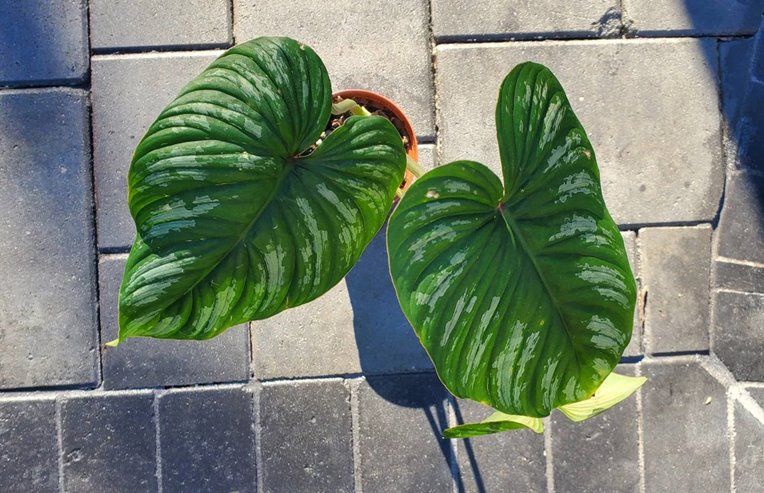
You can quickly identify which plant is which by considering their primary vein spacing and petiole.
As already seen, P. plowmanii has widely spaced primary veins and medium green petiole that is reddish-purple tinged towards their apex (top). Philodendron mamei, on the other hand, has more primary veins with narrower space between these veins. Also, it has a medium to dark olive-green petiole that is weakly ribbed and with a reddish tinge on the base.
Both have a petiole sheath with an undulating margin, but it is narrower in mamei.
Lastly, the other difference is that plowmanii has slightly shorter cataphylls than mamei.
Philodendron plowmanii x tenue
This Philodendron plowmanii x tenue is a lovely plant whose creator is unknown. Also, it has not yet been officially named.
It has heart-shaped, a little elongated, more quilted, or ridged leaves heart-shaped green to light green leaves, unlike plowmanii. This hybrid is rare and hard to find.
Philodendron plowmanii care
As a tropical plant, Philodendron plowmanii will thrive best in a warm (60-82°F), humid (50% or more relative humidity) place with bright, indirect light. Grow it in a chunky or airy well-draining soil high in organic matter and water it when the top few inches of potting mix start drying.
That is not all. Feed this plant once a month with a balanced, liquid houseplant fertilizer but only in growing months. Also, don’t forget to prune it regularly and repot after about two years or when rootbound.
Let us see in detail P. plowmanii care and growth needs.
1. USDA hardiness zone
The USDA hardiness zone for P. plowmanii is 10-11. It is not frost-hardy, and prolonged freezing will kill or damage it. Only people in these zones or even 9B without frost can grow it outdoor all year.
2. Humidity
It thrives best in high relative humidity, 60% or more but can tolerate average to slightly below slightly lower levels.
Very low humidity will make leaves margin and tips turn brown, leaves curl, plant droop or wilt, etc. In such a case, you can raise humidity by misting it, moving it to a more humid room like the bathroom, or having a pebble tray.
Lastly, if your humidity is very low, buying a humidifier is the best way to maintain desired levels.
3. Temperature
It requires a warm place with the ideal temperature being 60-85 (15-29°C). Avoid temperatures below 55℉ (12.8℃) or cold drafts. Also, don’t put your plant near AC or room heating vents and appliances that emit heat.
4. Light needs
Philodendron plowmanii needs bright, indirect light. But it can tolerate moderate indirect light. Avoid direct sun as it will cause sunburn.
On the other hand, too little light will make your plant grow slowly and have smaller, paler leaves. Use a grow light with 10,000-20,000 lux (1000-2000 footcandles). I recently switched to Briignite LED Grow Light Bulb and I must say it is a good pick. It uses less power, is affordable and has a long lifespan of up to 50,000 hours.
5. Soil mix
The best soil mix for Philodendron plowmanii should be airy, well-drained, and high in organic matter. A slightly acid to neutral, pH of 6.1-7.3 does best.
Buy an aroid mix from Etsy.com or make it at home. Don’t worry about the exact ratios that people give you. You can add perlite, coco coir or peat moss, and bark charcoal to your potting mix. To make it high in organic matter, add compost or worm castings.
6. Watering
This aroid prefers moist soil, not soggy or dry. Also, it would help if you let the soil dry a bit in-between waterings. So, we recommend watering after the top 2-3 inches of the potting mix feels dry.
Don’t follow a watering routine. Instead, water when the potting mix feels a bit dry up to the 1st knuckle. Alternatively, save yourself the trouble of feeling the soil each time. Buy a good moisture meter. We use XLUX Soil Moisture Meter, and I can affirm it is good.
7. Fertilizer
Feeding is once a month in growing seasons only. Use a balanced, liquid houseplant fertilizer. Our favorite brand is Miracle-Gro Indoor Plant Food (Liquid) with NPK 1-1-1. It feeds these plants instantly, and you can apply it directly or add to water.
Alternatively, you can use balanced, slow-release fertilizer for houseplants. Start applying in early spring and follow what the manufacturer recommends.
8. Pruning
Prune any dead, diseased, or damaged parts or leaves, and in spring or summer, you can cut back a bit of the stem to control growth. Be sure to use sterilized gardening scissors. Also, don’t forget to clean leaves when dirty or dusty.
9. Repotting
Repot your plowmanii once in two years or if rootbound. Pick a rectangular planter, 2-4 inches longer. It doesn’t have to be so deep since this plant is a terrestrial climber.
10. Staking or moss pole
This plant is a strict creeper, so you shouldn’t give or train it on a moss pole, trellis, totem, or any climbing surface.
Propagation
Philodendron plowmanii propagation is by stem cutting either in water or soil. But we find soil a better method, considering this plant is a ground creeper.
Wait until early spring, when the plant is starting to grow. But you can propagate it in summer.
Propagation stems are similar to how you propagate any other ground creeping philodendron plant on steps to follow. Like P. mamei or P. gloriosum, we already discussed
Problems
Yes, plowmanii is easy to care for aroid. But you may still encounter a few problems that may include the following:
1. Root rot
It is a common issue to overwatered P. plowmanii or those that grow in poorly draining, compact, or heavy soils.
Signs include wilting or drooping, dropping leaves, discoloration, stunted growth, mushy stem base, etc.
Check if your plant has some healthy roots (white or tan, i.e., not mushy black or brown) to solve the problem. If it does, you need to repot your plant immediately. Remember to cut any decayed bits with sterilized gardening scissors as you do so.
2. Pests
Pests that attack your Philodendron include spider mites, scale insects, thrips, aphids, or mealybugs. But they are uncommon, especially for indoor plants. In case of any, you can quickly kill them with insecticidal soaps, horticultural oil sprays, or neem oil.
3. Diseases
These plants are susceptible to some fungal and bacterial leaf spots and blights. Signs include brown or black lesions. Some may be sunken, start as water-soaked or have a yellow halo.
To prevent these diseases, isolate new plants and practice good sanitation (hand washing and sterilizing equipment).
4. More problems
Besides the above, your plant may have the following issues:
| Leaves yellowing | Overwatering is the most common reason. Others are too much or too little light, low humidity, underwatering, root rot, heat stress, and deficiency of some nutrients. |
| Brown tips, edges, spots, or leaves | Low humidity, heat stress, too much light, underwatering, and overfeeding are the main reasons for brown tips and edges. But if your plant has brown spots, it may be pests or diseases, while brown splotches occur due to overwatering. Cold drafts can also cause the sudden browning of leaves. |
| Leaves curling | It is a response to reduce moisture loss or protect leaves from the environment. Prime causes are underwatering, too much light, heat stress, and low humidity. |
| Drooping or wilting | Drooping or wilting is a sign that plant cells don’t have enough water to remain rigid. Causes are the same as those of leaves curling or anything that makes leaves lose too much moisture or roots unable to absorb water. |
Note: While giving you the above possible causes, we assume you have ruled out a shock after transplant or repotting and rootbound issues.
Where to buy Philodendron plowmanii
If you are looking for P. plowmanii on sale, start with Etsy.com. It has vendors from the US, the UK, Canada, Australia, etc., who sell at a competitive rate. eBay is a good alternative for eBay but doesn’t have as many sellers.
Next, try Facebook and Instagram. They have dozens of vendors. Other places are Plant Circle (Germany), Plantly.io (Marketplace), NSE Tropicals (USA), and Ecuagenera (Ecuador).
Lastly, search “Philodendron plowmanii for sale” on google and see what recommendations you get. We bet you won’t fail to find a vendor.
Frequently asked questions (FAQs)
Yes, Philodendron plowmanii is a rare plant that only a few people have on sale. As of now, none of the big box stores or large growers have it. You are also very unlikely to get it in your local plant store.
The price for Philodendron plowmanii ranges from $70 to $150, making it a costly plant. The citrus and silver variations sell at a similar price but if you want the variegated form, be ready to spend more than $1000.

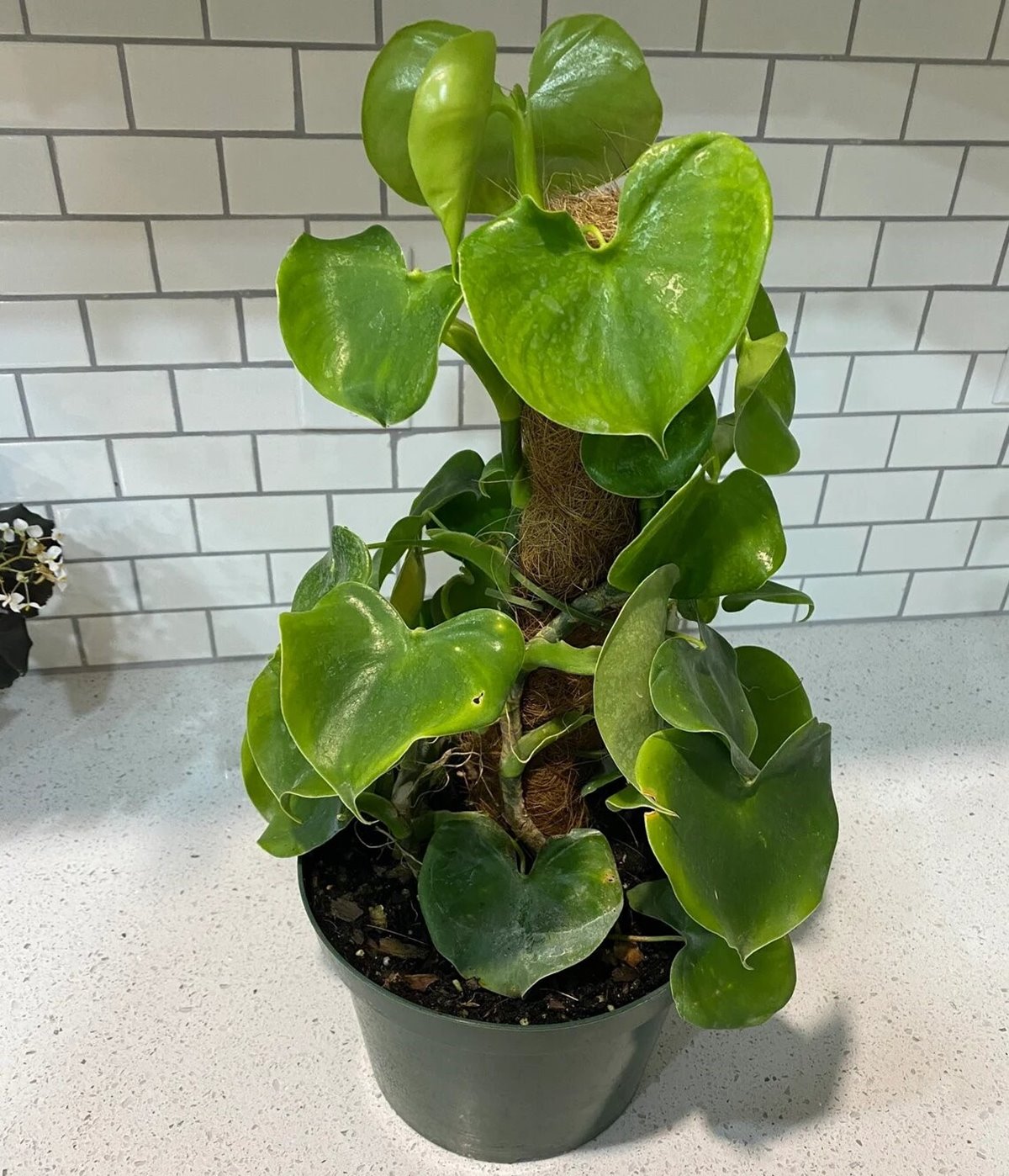

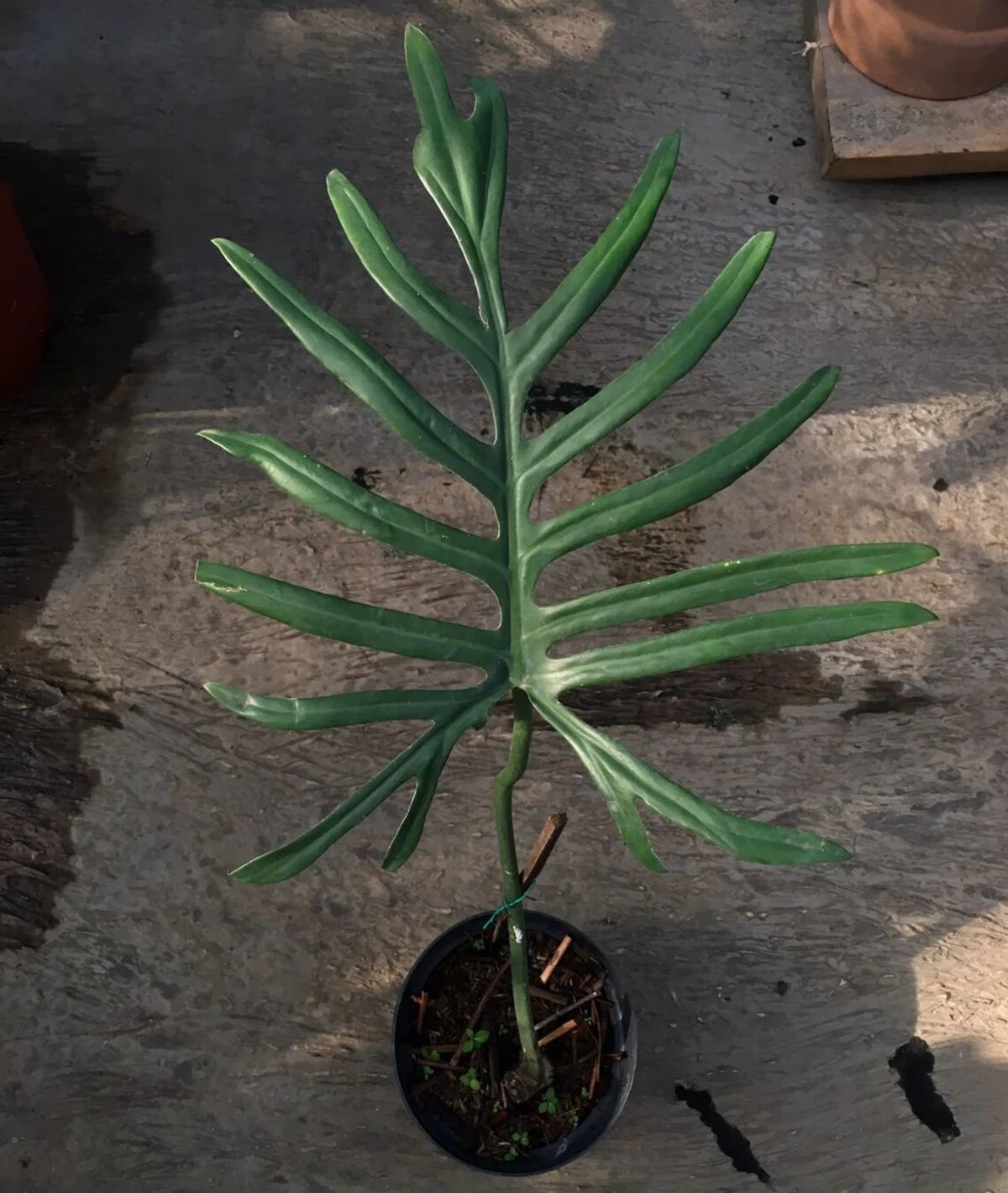
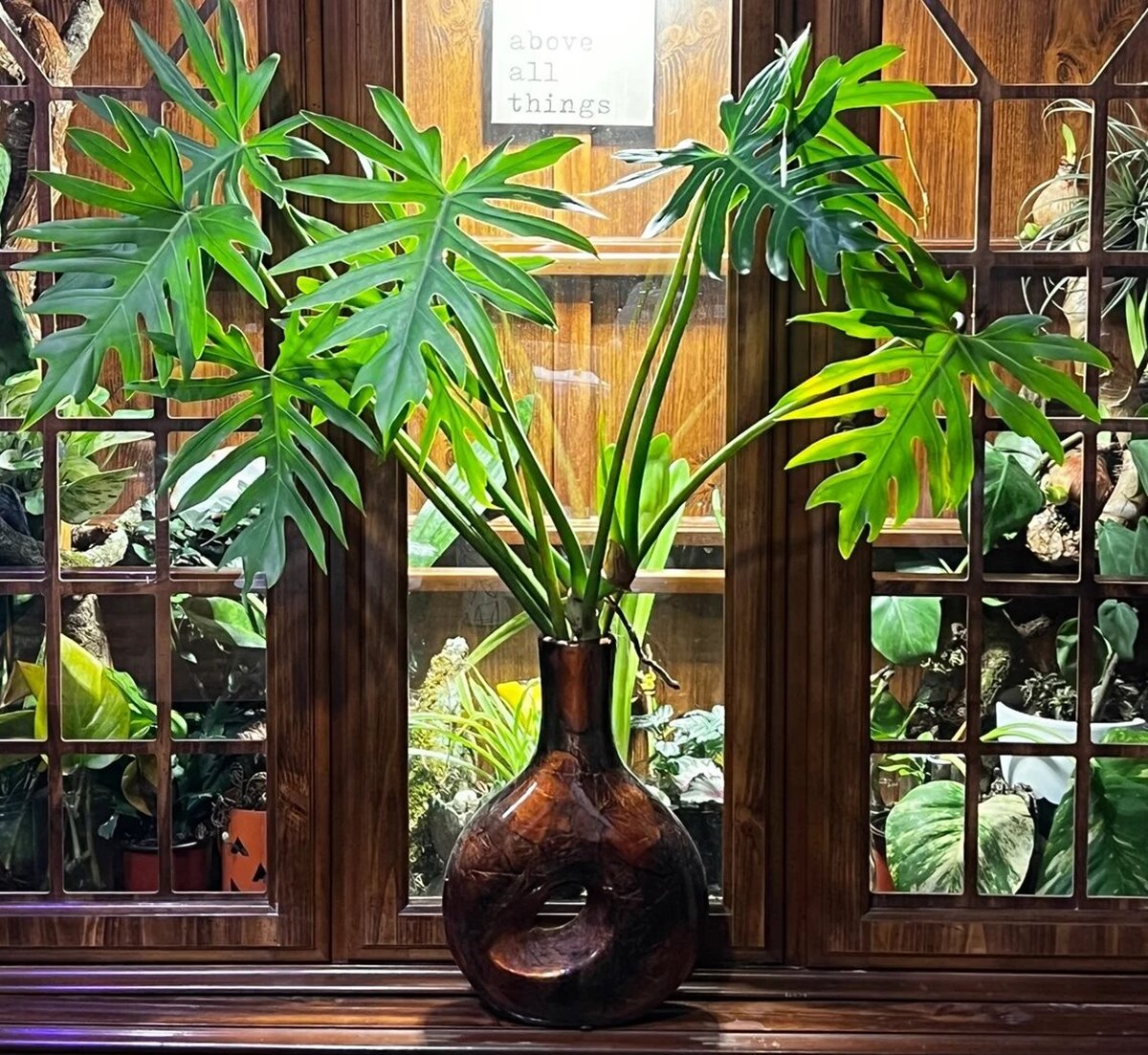
Plantipus
beautiful plant, nice article about Philodendron Plowmanii, i like it, thanks